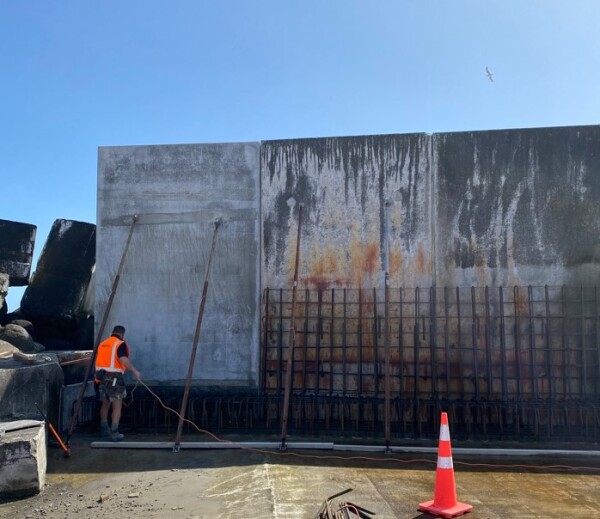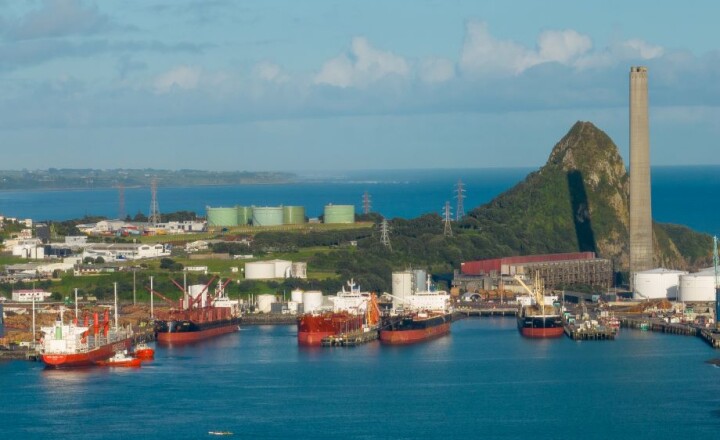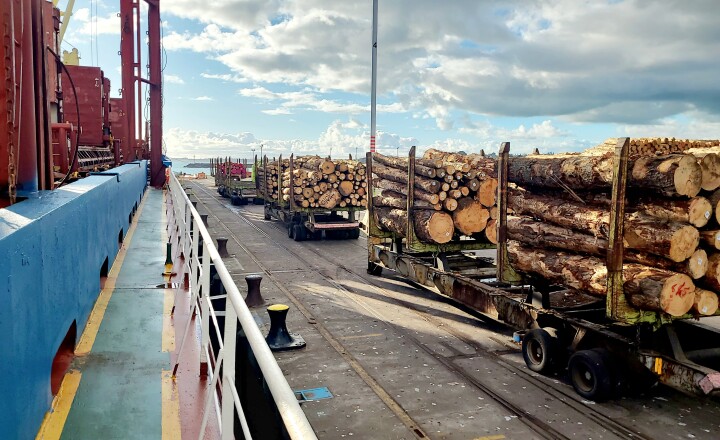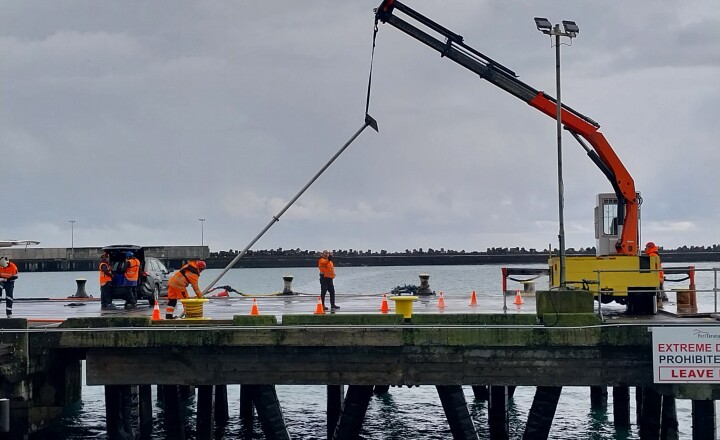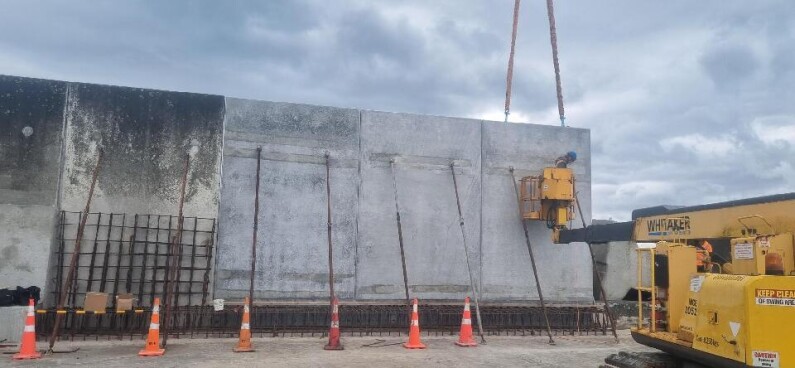
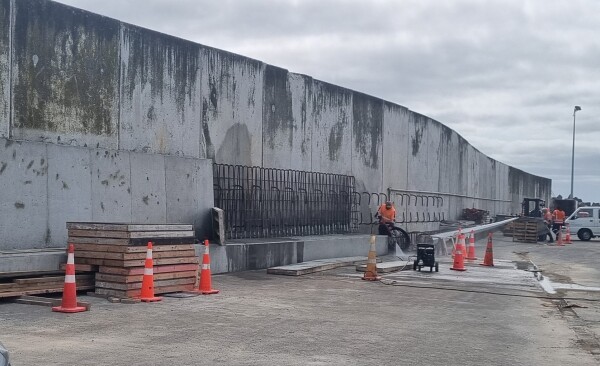
Port Taranaki is carrying out significant strengthening of the wave wall on the Main Breakwater to further protect vessels and people, and help prepare the port for future trade opportunities.
The Main Breakwater protects the port from the prevailing westerly winds and currents of the open sea. The concrete wave wall, which is 5m tall and stretches 170m, provides added protection for the vessels moored on the breakwater berths and the nearby Moturoa Wharf.
“Like the breakwater, the wave wall dissipates the power of large waves that hit the breakwater,” explains Port Taranaki project manager Dougal Morris.
“It was constructed in 1994 and since then two sections have been damaged during storm events – a number of panels were replaced following a 2005 event, and several panels were damaged during ex-tropical Cyclone Dovi, in 2022.”
Following a structural engineer’s assessment of the wall following the Cyclone Dovi event, Port Taranaki is undertaking work to replace seven panels and further strengthen the 1994 section.
The seven, 15-tonne steel reinforced concrete panels have been locally engineer-designed and precast off-site in Taranaki. Each panel is 5m tall, 3m long, and is 450mm at the base, tapering up to the top where a 700mm thick lip minimises wave spray over the top edge. The panels are being trucked to site and lifted by crane into place, interlocking together to improve rigidity.
Six of the panels being replaced are at the extreme eastern end of the wave wall, with the other being the first of the wave wall, closest to the port.
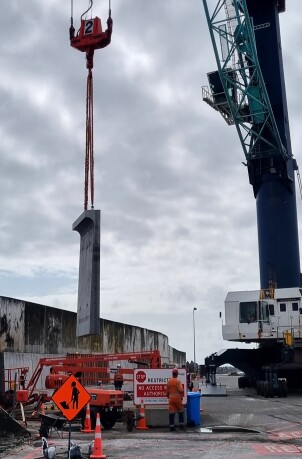
“The first and last panels of a wave wall are very important, as each needs to be strong to help maintain the integrity of the wall. If either end panel fails then it creates a cascade effect,” Mr Morris said
To prevent this occurring, a 1m thick and 3.8m tall buttress is being installed at each end of the wave wall.
A concrete footing more than 1m deep and 600mm high is being poured along the length of the wave wall on the breakwater side to provide added strength at the base.
“We’re also adding a supporting length of tapered reinforced concrete wall on the breakwater side of the 1994 section. It reaches about 2.4m up the existing wall and is connected to the wall via a number of steel rods.
“All up, about 1,400 holes have been drilled into the wall and the wharf for steel strengthening and connection points,” Mr Morris said.
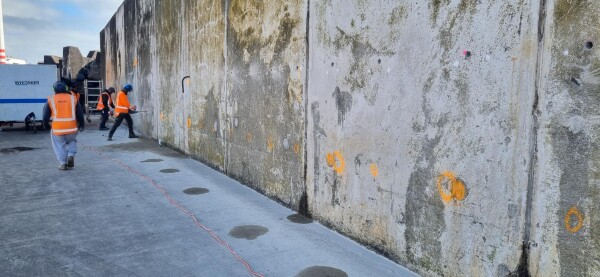
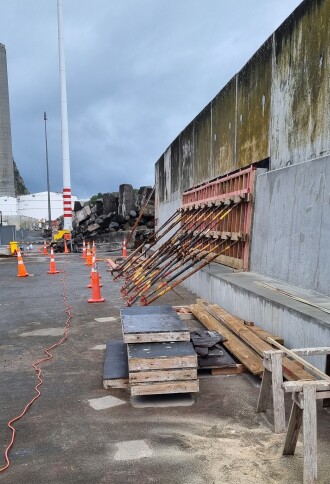
The three-month project involves a number of local contractors and port teams.
Port Taranaki general manager infrastructure John Maxwell said the often turbulent conditions on the west coast caused wear and tear to the breakwaters and wharves, and the port annually invested in repairs and maintenance.
“Our priority is providing a safe harbour for our customers, their people, and assets, and for our vessel fleet and people, so ensuring our wharves and breakwaters are operating effectively is extremely important.”
Mr Maxwell said the strengthening work also had a long-term focus.
“We’re looking ahead to the future of Port Taranaki and our role in possible trade and energy opportunities, such as supporting an offshore wind industry and decommissioning projects.
“Our port may change and adapt to new trade, so potential customers will want to know that their assets, infrastructure and people will be protected as best as possible. Therefore, having a high-strength engineered breakwater and wave wall is imperative.”
In addition, with climate change-related weather events expected to increase in frequency and strength, he said future-proofing and mitigating climate-related risks was important.
“This work helps to ensure and maintain the supply chain so that our customers and potential customers can continue to safely trade through our port, both now and in the future.”
